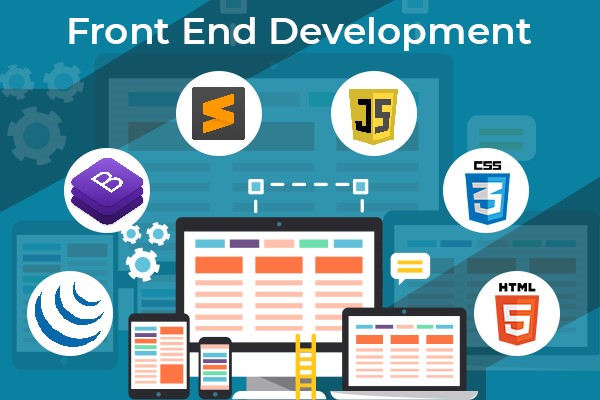The question had many developers’ minds ever since WebAssembly (WASM) appeared to be a possibility. While many have assumed that WebAssembly may spell the death of JavaScript, individuals involved in its development reject any such intention.
WebAssembly, or Wasm, is a new web technology rapidly gaining traction. It enables you to import compiled bytecode into your application through JavaScript and run it in the browser. It is intended to operate alongside standard JavaScript client code and can unlock valuable functionality for high-performance browser applications like video editing and image processing; his subject has been on many developers’ minds ever since WebAssembly (WASM) appeared to be a possibility. While many have assumed that WebAssembly may spell the death of JavaScript, individuals involved in its development reject any such intention.
As a result, it can unlock valuable functionality for high-performance browser applications like video editing, image processing, data visualization, video gaming, and virtual reality.
Riding to CNCF, 37% of web design companies already have some experience delivering apps with WebAssembly. According to CNCF research, the most popular runtimes are WasmEdge and WAMR.
This article will teach you how web assembly is the future of front-end development.
What is WebAssembly?
WebAssembly is more of a new encoding technology than a language. However, it can be executed in bytecode in contemporary browsers. WebAssembly may be written in a compiled language like C / C ++ and run on the Web alongside Javascript.
Briefly, it offers a new approach for code written in many languages to execute on the web front end and has unrivaled performance in JS code.
It can overcome the limitations of the original JS in image processing, gaming, and demanding calculations, as well as run front-end code in the browser more quickly.
After writing the native code (C / C ++), we can use tools like Emscripten to compile it. Then, Wasm loads it in the browser using the Fetch or XHR API.
Remember that WebAssembly is not meant to be a replacement for JavaScript. On the contrary, it is intended to operate with JavaScript, allowing us to use both languages.
The Future of Front end development
While WebAssembly may not be the end of JavaScript, it will undoubtedly transform the face of front-end web development. Although it is still too early to anticipate how this transition will unfold, we are well enough to make some phoenix web design firms predictions about development.
The future of front-end web development, as enabled by WebAssembly, is:
- Linguistically Diverse
- Extremely Fast
- Parallel
- WebAssembly Enables Linguistic Diversity
WebAssembly will significantly expand the languages available for developing front-end applications and tools, allowing developers to create applications in their chosen language.
There is already a wide variety of implementations, with compilation to WASM available in over 20 different languages, including the following prominent ones:
- Rust
- C/C++
- C#/.Net
- Java
- Python
- Elixir
- Go
This linguistic diversity will enable the emergence of web frameworks for developers of different languages, allowing them to construct apps directly in their preferred language. Some early examples include Yew for Rust and Humble in Go (Humble now targets GopherJS as a ‘compile-to-javascript’ backend but will eventually offer a WASM backend).
- WebAssembly will enable Parallelism.
This is more theoretical, as it is only partially realized in today’s WebAssembly.
Since the migration to multicore processors began about 2005, it has been clearer that software must become parallel to get higher performance.
Languages like Rust and Go were built with Parallelism in mind from the start, making it significantly easier to develop parallel applications. WebAssembly’s threads feature is still a concept, but once it becomes a reality, we will see web apps use fine-grained Parallelism.
Most of this will happen at the framework and library levels again. I don’t see the ordinary application developer adopting WebAssembly threads in their application, but there is excellent potential only on the framework side. React’s new Fiber Architecture is already considering slicing and dicing behind-the-scenes rendering work into bits that may be handed around and postponed.
Consider a WebAssembly-powered Fiber that distributes rendering work over all available cores and then passes it on to the JavaScript application as needed.
- WebAssembly enables Extremely Fast Web Applications
WASM will allow some very astonishing performance increases. We’ve seen Firefox demonstrate that, unlike JavaScript, WASM can be built and executed as soon as it comes over the wire.
This parse-time enhancement eliminates one of the most significant bottlenecks in current JavaScript-heavy web applications: initial load time. In a series of benchmarks provided by Figma, a browser-based design tool, comparisons between implementations utilizing asm.js versus WebAssembly revealed a 3X reduction in load time offered by WebAssembly.
For important papers, this meant reducing from over 10 seconds to browser-interactive to less than 5. That is a vast improvement.
Runtime performance gains have been less spectacular, but they are still present. For example, benchmarks of intensive graphics tasks comparing WASM to D3 revealed 30% gains in large projects.
Even if most online apps stay in JavaScript, libraries and frameworks created with WebAssembly may allow web design companies to benefit from these speed increases while continuing to build mainly in JavaScript.
This tendency will continue to increase. For example, consider JavaScript frameworks offering “fast-boot” startup sequences compiled to WASM that then progressively augment with JavaScript and load your JavaScript-based application, allowing sophisticated web apps to boot up and reach interactivity as quickly as basic static webpages do today.
Conclusion
WebAssembly is an intriguing new technology that drastically alters the web development environment. Of course, it’s tough to forecast how the transformation will play out, but as technology advances, it’s apparent that the future of web development is bright.
Wasm provides outstanding speed and the ability to construct web apps in languages other than JavaScript. However, this does not imply that WebAssembly will replace JavaScript anytime soon, as Wasm was designed to operate alongside JavaScript to boost web speed. Instead, most developers will utilize both technologies for their projects.


